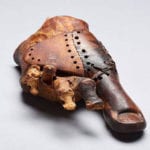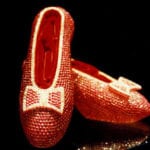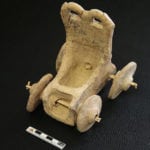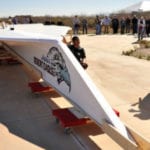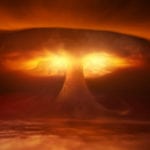 Humans
Humans  Humans
Humans  Movies and TV
Movies and TV The 10 Most Heartwarming Moments in Pixar Films
 Travel
Travel Top 10 Religious Architectural Marvels
 Creepy
Creepy 10 Haunted Places in Alabama
 History
History Top 10 Tragic Facts about England’s 9 Days Queen
 Food
Food 10 Weird Foods Inspired by Your Favorite Movies
 Religion
Religion 10 Mind-Blowing Claims and Messages Hidden in the Bible Code
 Facts
Facts 10 Things You Never Knew about the History of Gambling
 Weird Stuff
Weird Stuff 10 Cool and Creepy Facts about Collecting Tears
 Humans
Humans The Ten Most Lethal Gunslingers of the Old West
 Humans
Humans Ten Historic Men Who Deserve Way More Credit Than They Got
 Movies and TV
Movies and TV The 10 Most Heartwarming Moments in Pixar Films
 Travel
Travel Top 10 Religious Architectural Marvels
Who's Behind Listverse?

Jamie Frater
Head Editor
Jamie founded Listverse due to an insatiable desire to share fascinating, obscure, and bizarre facts. He has been a guest speaker on numerous national radio and television stations and is a five time published author.
More About Us Creepy
Creepy 10 Haunted Places in Alabama
 History
History Top 10 Tragic Facts about England’s 9 Days Queen
 Food
Food 10 Weird Foods Inspired by Your Favorite Movies
 Religion
Religion 10 Mind-Blowing Claims and Messages Hidden in the Bible Code
 Facts
Facts 10 Things You Never Knew about the History of Gambling
 Weird Stuff
Weird Stuff 10 Cool and Creepy Facts about Collecting Tears
 Humans
Humans The Ten Most Lethal Gunslingers of the Old West
10 Insane Nuclear Versions Of Normal Things
Nuclear power has revolutionized the world. Some engineers and scientists aren’t content with only using nuclear energy for general power grids; they want nuclear power everywhere. The items in this list are examples of engineers taking normal, everyday things and fitting them with nuclear reactors, just to see if they will work.
10 Convair NB-36
Nuclear Airplane
Immediately after World War II, the world’s superpowers invested in huge bombers to deliver nuclear payloads. Since nuclear missiles were still in their infancy, long-range bombers were the best way to bomb enemy targets. Although impressive in their own right, bombers have limitations. Even long-range bombers have a finite range. For the range problem, the United States turned to an exotic solution. US Army Air Force commanders invested in tests to place a nuclear reactor inside a bomber.
At the time, the chief USAAF bomber was the gigantic B-36 Peacemaker. The plane was big enough to carry a nuclear reactor onboard and still fly. Convair engineers modified the B-36 to carry a small nuclear reactor, giving the plane unlimited range. Designated the NB-36, the bomber underwent a variety of changes. To keep the crew safe from radiation, the crew compartments were specifically designed with radiation shielding. Engineers placed large water tanks around the reactor to absorb any escaping radiation.
For the first flight tests, the reactor was not attached to the engines. Convair decided to use the NB-36 as an aerodynamic test plane for the proposed X-6 bomber, which would be fully nuclear-powered. Even with the nuclear reactor not powering the engines, the USAAF was very careful with the NB-36. The airplane had radioactive symbol markings, and the president of the United States had a special hotline installed to inform him of any crashes. During testing, the hotline was almost used when a smoke alarm went off in the reactor room. Despite a promising start, advances in conventional airplane technology and aerial refueling negated the usefulness of a nuclear-powered bomber. Public officials also raised concerns over the safety of such an airplane, leading to the project being shelved in the early 1960s.
9 Chrysler TV-8
Nuclear Tank
During the Cold War, NATO commanders feared that the Soviet Union would use tactical nuclear weapons to turn the tide in a ground war. In the US, Chrysler developed a tank that was specifically designed to withstand a nuclear strike. The TV-8 never reached mass production and was mainly a concept demonstrator, but it was the only serious attempt to design a nuclear-powered tank. To survive nuclear detonations, the TV-8 had a strange configuration. All of the critical parts of the tank were in the bulbous turret, including all of the weaponry and even the engine. The turret was completely sealed from the outside world, and the crew used closed-circuit television to see their surroundings.
Designed as a medium tank, the TV-8 had a standard 90-millimeter gun. Unusual for a tank, the turret could not rotate, meaning that the crew had to turn the whole thing to aim at its target. The turret featured two mounted machine guns in a top cupola, which were aimed by the tank commander. Chrysler originally gave the tank a conventional power plant but later investigated fitting it with a small fission reactor in the back of the turret and making the tank electrically powered. After investigating the design, the US Army decided that it provided insignificant advantages over normal tank designs, and the project fell out of favor.
8 M-29 Davy Crockett
Nuclear Bazooka
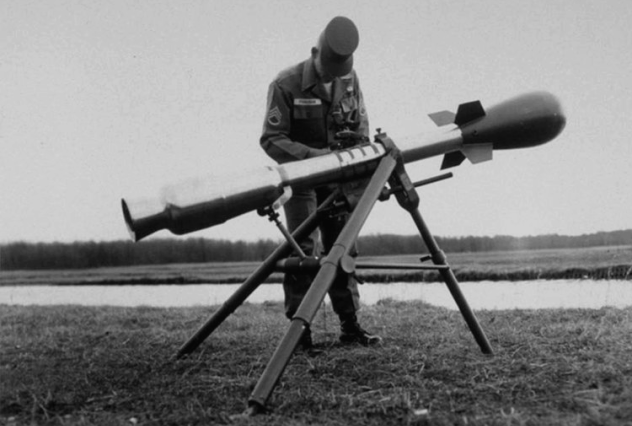
It should come as no surprise that various forces in the Cold War developed insane weapon systems, but as we’ve already seen, NATO had the monopoly on odd usages of nuclear weapons. Faced with the danger of a Soviet ground invasion in Europe, the United States spent lots of money developing small nuclear weapons that could turn the tide in the event of war. Key among the proposed nuclear weapons was the M-29 Davy Crockett. The Davy Crockett was a recoilless gun that shot a small nuclear warhead, making it essentially a nuclear bazooka.
Originally, the Davy Crockett would have been carried into combat by a group of soldiers and operated by a three-man team. Later, the Army modified the design to be carried on jeeps and other army vehicles. Unfortunately for the United States (and fortunately for the world), the Davy Crockett was not a particularly effective weapon. Even at its highest setting, the rocket had a pitifully small blast radius. Also, the resulting nuclear radiation would have provided plenty of danger to future Europeans.
The M-29 was easy to use. Once in place, the crew would fire a small 37-millimeter spotting round to figure out the distance to target and the general launch trajectory. Even with the use of a spotting round, the Davy Crockett’s accuracy was dreadful. During testing in Nevada, the shell rarely landed within hundreds of feet of the intended target, a disconcerting reality for a nuclear weapon. Although the project had shortcomings, Davy Crockett guns saw deployment in Europe between 1961 and 1971. None saw combat usage.
7 Jupiter Icy Moons Orbiter
Nuclear Space Probe
The Galilean moons of Jupiter have a variety of fascinating features. Chief among these is the possibility of oceans in the moons, specifically on Europa and Ganymede. Where there is water, there is the chance for life, and NASA is fascinated with this possibility. To explore the moons, NASA and the Jet Propulsion Laboratory have proposed and designed a variety of spacecraft to explore the moons. One of the most interesting was the nuclear-powered and futuristic-looking Jupiter Icy Moons Orbiter (JIMO).
JIMO was the practical application of NASA’s Project Prometheus, which investigated using nuclear power to propel spacecraft ion engines. The project showed that not only was a nuclear-powered space probe possible, but it would grant unprecedented possibilities to exploration missions. JIMO would have much more available electrical power than the current generation of NASA probes. This would have allowed the probe to explore the three icy Galilean moons in one mission. After spending time orbiting one moon, JIMO would be able to fire up its nuclear-powered engines and make the trip to the next moon for further exploration.
When it came time to allocate funds, NASA was optimistic for the new spacecraft and the possibility of actually investigating the Galilean moons for life. However, budgetary problems soon surfaced once NASA realized how ambitious the project actually was. As discussion over the JIMO program pushed on, NASA executives realized that it was far too costly for the organization and had to move on to less ambitious projects to explore the moons.
6 Ford Nucleon
Nuclear Car
Before nuclear power became more frightening, it promised a whole new generation of long-lasting and clean power sources. It should come as no surprise that during the 1950s, engineers and manufacturers tried to figure out ways to use nuclear power for a variety of tasks. Most never left the head of the person thinking about them, but Ford pushed ahead with an ambitious design to put a nuclear reactor inside a normal car.
Named the Nucleon, Ford’s concept car was designed with range in mind. Had the necessary technology to actually build one existed (e.g., small enough reactors and light enough shielding), each Nucleon would have been able to go 8,000 kilometers (5,000 mi) before its reactor would need to be recharged. Instead of trying to figure out a way to refuel the reactor, Ford planned to have recharging stations that would simply swap out an old reactor for a new one. Conceptually, these recharging stations would have taken the place of standard gas stations, but they’d have radioactive material.
The Nucleon had a beautiful 1950s design that looked like a science-fiction spaceship, with clean lines and twin tails on the rear. Passengers rode in a contained pod at the very front of the vehicle, ending up ahead of the front axles. Ford went with the odd arrangement to keep the passengers as far away from the nuclear reactor as possible. After the initial hype around the Nucleon died down, cooler heads realized that it would be dangerous to have miniature nuclear reactors speeding around the cities and highways of the United States, and the project ground to a halt.
5 Project Pluto
Nuclear Jet Engines
In the late 1950s, the United States began to earnestly develop intercontinental ballistic missiles and cruise missiles. The Air Force performed many experiments to develop the most devastating and effective missiles. One of the weirder and more terrifying projects was Project Pluto. This secret defense initiative developed a nuclear-powered ramjet engine that would give thrust for the Vought SLAM missile. Although the missile itself never got off the drawing board, its exotic propulsion device did.
Ramjets work by forcing air through the engine at supersonic speeds, which causes compression and thrust. Project Pluto engines had an unshielded nuclear reactor running inside of the ramjet. Because it did not have a shield, the reactor would heat up the air in the engine and greatly increase the available thrust for the missile. Using the ramjet, the SLAM missile would accelerate to Mach 4 to strike and cause huge amounts of damage.
The first nuclear ramjet, called TORY-IIA, started testing in 1961. Ground testing continued for three years in Nevada, far away from any civilization. During the tests, the ramjet was extremely powerful and would work very well for the SLAM missile. However, as testing went on, the Air Force realized that the missile was too dangerous even for them. There would be no safe places to test a nuclear-powered cruise missile, and the reactor could never be turned off. If it survived the strike, there would be a running—and unshielded—nuclear reactor hanging out in the strike zone. Fortunately, the Air Force considered the risks too great and canceled the project.
4 The Lenin
Nuclear Icebreaker
Icebreaking is an important job in cold northern seas. Without ships designed specifically to break up ice, most cargo would not be able to travel, effectively halting trade to northern countries like Russia. Before the fall of the Soviet Union, icebreakers were commonplace, but all very severe limitations on how much fuel they could carry. To rectify the problem, Soviet shipbuilders decided to put a nuclear reactor on an icebreaker, creating the Lenin, a ship that was both the first nuclear icebreaker and the first nuclear-powered surface ship in the world.
The Lenin first launched in 1959 and was as much a scientific statement as a practical ship. Nobody had created a ship like it before, and it showed Soviet engineering prowess while also demonstrating that they were using nuclear power for peaceful purposes. Initially, the ship’s performance was exemplary, and the Lenin ushered in a new generation of ships for the Soviet Union. Using the nuclear reactor, the Lenin made a variety of Arctic expeditions and was eventually awarded the Order of Lenin in 1974. This was the Soviet Union’s highest award, usually given to soldiers in the line of duty. Since the Soviets were so proud of their icebreaker, they made an exception.
Prompted by the success of the Lenin, Soviet shipbuilders constructed a fleet of nuclear icebreakers. On the 50th anniversary of its launch, the Lenin was retired in Murmansk, where it now resides as a museum. To this day, the ship remains an artifact of the early nuclear era and one of the most influential ships of all time.
3 Project Oilsand
Nuclear Oil Mining
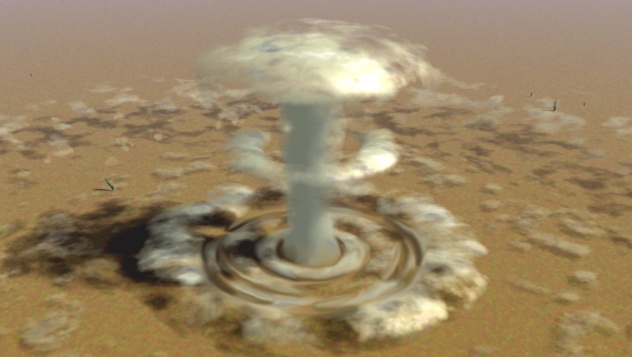
Oil drilling is a controversial topic today, but back in the late 1950s, it almost got even more controversial. In 1958, the Canadian government was looking at ways to better extract bitumen from Alberta’s oil sands. Dr. Manley Natland, a notable geologist, believed that he had the answer. After watching the sunset in Saudi Arabia, Natland realized that an underground nuclear explosion could liberate the bitumen from the oil sands and offer a quick and efficient way to extract the material.
Natland discussed the proposal with the US Atomic Energy Commission, which was doing research into peaceful nuclear explosions as a part of Project Plowshare. The AEC gave Natland the go-ahead and even stated that they would help him with the first detonation, planned to occur 10 kilometers (6 mi) underground in remote Alberta. However, Natland’s proposal met skepticism over its environmental impact, specifically the pollution of groundwater. Eventually, the Canadian government decided to move away from nuclear proliferation, both as a peace measure and to stop Canadian nuclear devices from falling into Soviet hands. With nonproliferation taking hold, Natland’s plan faded away and remains an obscure footnote in Canadian mining history.
2 SADM And MADM
Nuclear Backpacks And Landmines
As mentioned earlier, the United States was very concerned about fighting a land war with the Soviet Union in Europe. They developed a variety of odd weapons to fight the Soviets, usually revolving around small nuclear weapons, like the previously mentioned M-29 Davy Crockett. Possibly the strangest nuclear versions of normal wartime weapons were the Special and Medium Atomic Demolition Munitions (SADM and MADM), which were essentially nuclear landmines.
The SADM, which saw the most use, was a small nuclear device that could fit inside a special forces backpack. A special forces operator using a SADM device would be expected to parachute behind enemy lines and use the small nuke to destroy key infrastructure. Operators could also use them in scuba dives. After a successful strike, the land around the explosion would be uninhabitable, slowing any invasion across Europe.
SADM training took place throughout the Cold War but was finally retired. A related weapon was the MADM, which was a smaller version of the SADM backpack nuke. The MADM, which didn’t see wide usage, was a low-yield weapon used as a landmine to disrupt troop movements. Fortunately, the SADM and MADM never saw combat.
1 LENR
Household Nuclear Reactor

Most of the nuclear devices described here have been war-related, but Chicago entrepreneur Lewis Larsen believes that the future of nuclear reactors is to use them in the home. Larsen spent most of his professional life bouncing between jobs, but in the 1990s, he began to investigate nuclear energy with the goal of creating small nuclear reactors. Since then, his name is synonymous with the field.
Larsen is looking at developing the low-energy nuclear reactor, or LENR. Larsen’s LENR could power a house with almost no emissions and would be as small as a normal microwave oven. According to him, all of the technology and research supports the possibility; all that is left is the engineering. Skeptics claim that Larsen’s LENR is suspiciously like the University of Utah’s cold fusion reactor, which ended up being a hoax.
However, Larsen may be onto something. Recently, NASA began research into LENR power plants for houses and space planes. Physicist Joseph Zawodny takes Larsen’s research seriously and states that Larsen’s LENR research is fundamentally different from cold fusion. Zawodny is heading a NASA team tasked with developing house-safe nuclear reactors. While the idea may seem pretty far-fetched, the US Department of Energy began putting small amounts of research money into Zawodny’s work in 2013. We’ll have to wait and see if it pans out.
Zachery Brasier is a physics student who likes to write on the side.
